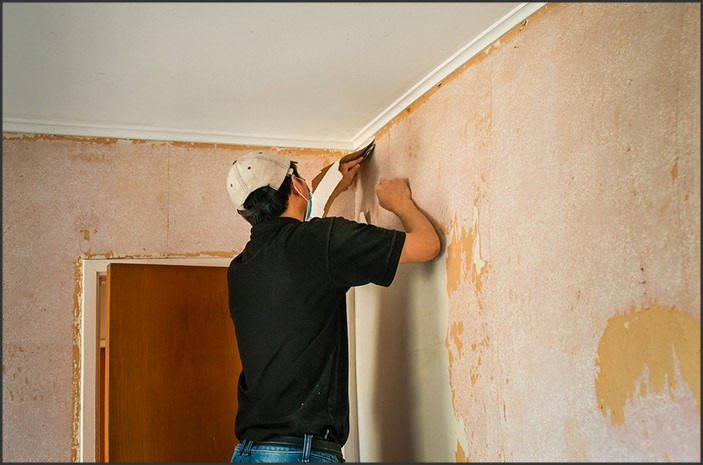Ceiling Concerns: Understanding Popcorn Ceilings and Asbestos

Source : https://www.mauriceblackburn.com.au
Ceiling concerns are a common issue for homeowners, especially when it comes to popcorn ceilings and asbestos. Popcorn ceilings, also known as acoustic ceilings, were popular in the 1970s and 1980s, but have since been linked to health risks due to the presence of asbestos. Asbestos is a naturally occurring mineral that was used in many building materials prior to the 1980s, and can cause serious health problems if inhaled. Understanding the risks associated with popcorn ceilings and asbestos is essential for homeowners who are considering remodeling or renovating their homes. This article will provide an overview of popcorn ceilings and asbestos, as well as tips for safely removing and replacing them.
What Homeowners Need to Know About Popcorn Ceilings and Asbestos: A Comprehensive Guide
Popcorn ceilings, also known as acoustic ceilings, are a common feature in many homes. While they may be aesthetically pleasing, they can also contain asbestos, a hazardous material that can cause serious health problems. As such, it is important for homeowners to understand the risks associated with popcorn ceilings and how to safely remove them if necessary.
Asbestos is a naturally occurring mineral that was widely used in building materials prior to the 1980s. It is composed of microscopic fibers that can become airborne when disturbed, and when inhaled, these fibers can cause serious health problems such as lung cancer and mesothelioma. Popcorn ceilings were often made with asbestos-containing materials, and as such, they can pose a health risk if disturbed.
If you suspect that your popcorn ceiling contains asbestos, it is important to have it tested by a professional. This can be done by collecting a sample of the material and sending it to a laboratory for analysis. If the results come back positive for asbestos, it is important to take the necessary steps to safely remove the material.
The first step is to hire a professional asbestos abatement contractor to remove the popcorn ceiling. This process involves covering the area with plastic sheeting and using a vacuum to collect any asbestos fibers that may be present. The contractor will then seal the area and dispose of the material in accordance with local regulations.
Once the popcorn ceiling has been removed, it is important to take steps to prevent any further exposure to asbestos. This includes sealing any cracks or gaps in the walls or ceiling, and ensuring that any remaining asbestos-containing materials are properly sealed and labeled.
In conclusion, popcorn ceilings can contain asbestos, and as such, it is important for homeowners to understand the risks associated with them. If you suspect that your popcorn ceiling contains asbestos, it is important to have it tested and to hire a professional asbestos abatement contractor to safely remove it. Finally, it is important to take steps to prevent any further exposure to asbestos, such as sealing any cracks or gaps in the walls or ceiling.
How to Identify and Remove Asbestos from Popcorn Ceilings: A Step-by-Step Guide
Asbestos is a hazardous material that can be found in many older homes. It is especially common in popcorn ceilings, which were popular in the 1970s and 1980s. Asbestos fibers can cause serious health problems if inhaled, so it is important to identify and remove any asbestos from your home. This guide will provide a step-by-step process for identifying and removing asbestos from popcorn ceilings.
Step 1: Identifying Asbestos in Popcorn Ceilings
The first step in removing asbestos from popcorn ceilings is to identify whether or not it is present. Asbestos fibers are not visible to the naked eye, so it is important to have a professional inspect the ceiling for asbestos. A professional will use a microscope to examine the ceiling material and determine if asbestos is present.
Step 2: Preparing for Asbestos Removal
Once it has been determined that asbestos is present in the popcorn ceiling, it is important to take the necessary precautions to ensure the safety of those in the home. This includes sealing off the area with plastic sheeting, wearing protective clothing, and using a respirator. It is also important to ensure that the area is well-ventilated.
Step 3: Removing Asbestos from Popcorn Ceilings
Once the area is prepared, the asbestos can be removed from the popcorn ceiling. This should be done carefully and slowly to avoid releasing asbestos fibers into the air. The asbestos should be placed in a sealed container and disposed of properly.
Step 4: Cleaning Up After Asbestos Removal
Once the asbestos has been removed, it is important to clean up the area thoroughly. This includes vacuuming the area with a HEPA filter vacuum and wiping down any surfaces with a damp cloth. It is also important to dispose of any protective clothing and respirators used during the removal process.
By following these steps, you can safely and effectively identify and remove asbestos from popcorn ceilings. It is important to remember that asbestos is a hazardous material and should only be handled by a professional. If you have any questions or concerns, it is best to consult a professional before attempting to remove asbestos from your home.In conclusion, popcorn ceilings and asbestos are two important topics to consider when it comes to ceiling concerns. Popcorn ceilings can be a source of dust and allergens, while asbestos can be a serious health hazard. It is important to understand the risks associated with both and to take the necessary steps to ensure the safety of your home and family. If you suspect that your ceiling may contain asbestos, it is important to contact a professional to have it tested and removed if necessary.